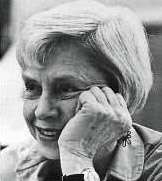Constance Forsyth
| Constance Forsyth | |
|---|---|
 | |
| Born |
1903 Indianapolis, Indiana[1] |
| Died |
1987 (aged 83–84) Austin, Texas[1] |
| Nationality | American |
| Education | Butler University, John Herron Art Institute, and the Pennsylvania Academy of Fine Arts |
| Known for | Printmaking |
Constance Forsyth (1903–1987) was a nationally renowned American artist.[2][3][4] She was a notable artist in the development of printmaking from 1900-1950.[5][6] She was born in Indianapolis.[7] In 1925 she received a B.A. in chemistry from Butler University, and in 1929 she received a diploma from the John Herron Art Institute.[4] In spring 1930 as well as 1927-1928 she studied at the Pennsylvania Academy of Fine Arts.[4] In 1932 and 1934 she spent the summers studying at the Broadmoor Art Academy.[4] She helped Thomas Hart Benton work on the Indiana murals for the Century of Progress International Exposition, which was held in 1933.[4] She was also part of the Irvington Group of artists in Irvington, Indiana.[8][9] From 1940 until her retirement in 1973 she taught at the University of Texas at Austin; she was the first female faculty member hired by their art department, where she headed their printmaking department.[3][10] As of 1973, her work had been exhibited in six countries, including the United States, and she had received several national prizes.[11] In 1985 she received the Southern Graphics Council's Printmakers Emeritus Award.[12] She belonged to the Hoosier Salon and the Society of Print Makers, and was important to the founding of and activities of the Texas Printmakers Guild.[3][10] She was the daughter of artist William Forsyth.[3] The Family Forsyth exhibit displays works by Constance Forsyth, William Forsyth, and Robert Selby (husband of Evelyn Forsyth) at the Irvington Historical Society, Sep. 5 - Nov. 11, 2018.[13]
Further reading
Farmer, David. “Constance Forsyth: Printmaker.” Tamarind Papers 12 (1989): 46—54.
References
- 1 2 McQueary, Carl. "Constance Forsyth (1903 - 1987)". askART. Retrieved 20 August 2017.
- ↑ Deborah C. Pollack (18 January 2015). Visual Art and the Urban Evolution of the New South. University of South Carolina Press. pp. 58–. ISBN 978-1-61117-433-5.
- 1 2 3 4 "WILLIAM FORSYTH PAPERS, 1863-1985".
- 1 2 3 4 5 "FORSYTH, CONSTANCE".
- ↑ http://www.utexas.edu/faculty/council/2000-2001/memorials/SCANNED/forsyth.pdf
- ↑ Clinton Adams (1983). American Lithographers, 1900-1960: The Artists and Their Printers. University of New Mexico Press. ISBN 978-0-8263-0660-9.
- ↑ Katie Robinson Edwards (1 July 2014). Midcentury Modern Art in Texas. University of Texas Press. pp. 152–. ISBN 978-0-292-75659-5.
- ↑ Nagler, Cinnamon Catlin-Legutko ; with essays by Katherine C.; Hale, Hester Anne (2004). The art of healing : the Wishard art collection. Indianapolis, IN: Indiana Historical Society Press in cooperation with the Wishard Memorial Foundation. p. 44. ISBN 0871951711.
- ↑ Ownings, Jr., Frank. "The Irvington Group of Artists, 1928-1937" (PDF). irvingtonhistorical.org. Archived from the original (PDF) on March 4, 2016. Retrieved August 4, 2015.
- 1 2 "Discovery!: Three One-Woman Shows - Rita Blasser, Constance Forsyth & Karen Lastre - William Reaves - Sarah Foltz Fine Art (formerly William Reaves Fine Art) - William Reaves - Sarah Foltz Fine Art (formerly William Reaves Fine Art) - VISUAL ARTS + MUSEUMS - ArtsHound.com".
- ↑ Emmis Communications (March 1973). The Alcalde. Emmis Communications. pp. 9–. ISSN 1535-993X.
- ↑ Jules Heller; Nancy G. Heller (19 December 2013). North American Women Artists of the Twentieth Century: A Biographical Dictionary. Routledge. pp. 190–. ISBN 978-1-135-63882-5.
- ↑ "Irvington Historical Society". Irvington Historical Society / Bona Thompson Center. Retrieved 2018-08-31.